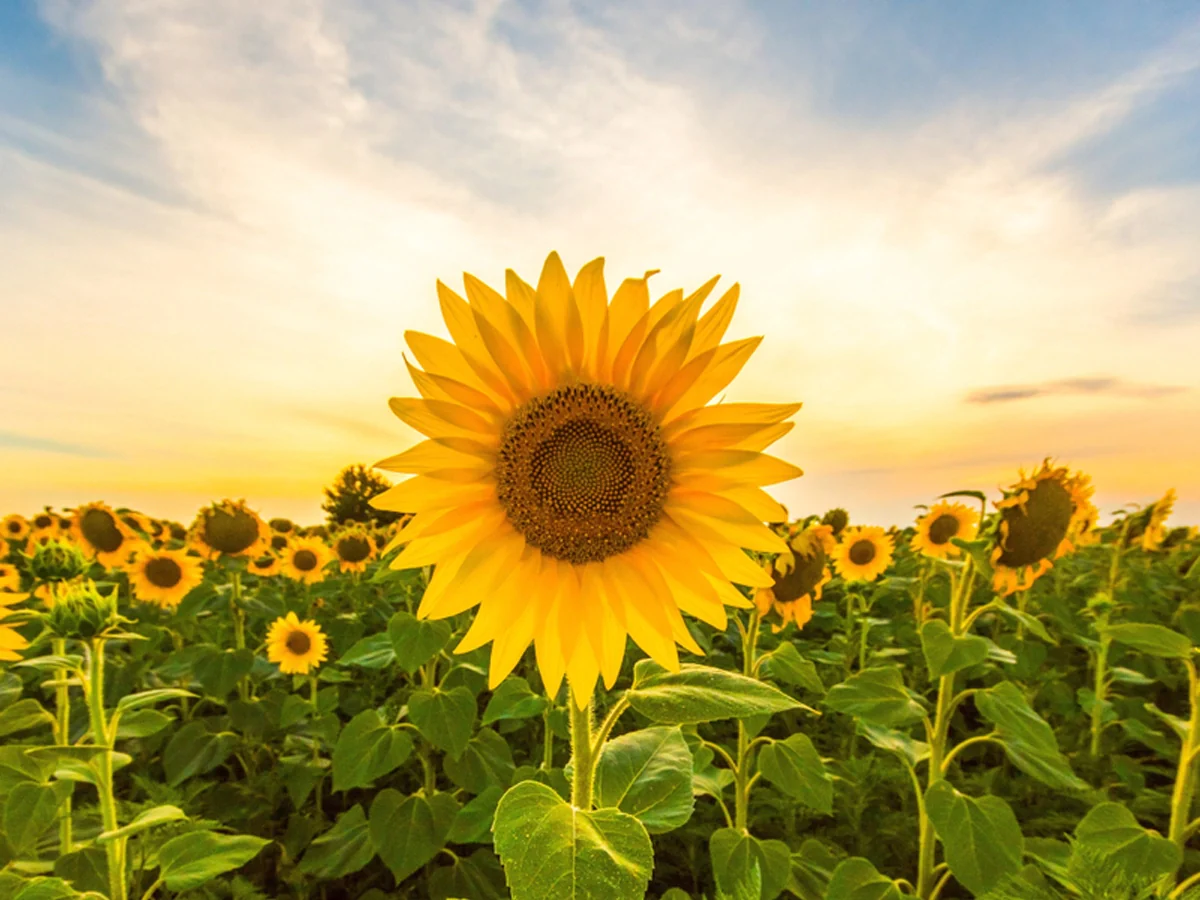shilohcreekkennels.com – In the vast tapestry of the natural world, few symbols resonate with the human spirit as profoundly as the sunflower. Standing tall and proud, with its face turned towards the sky, the sunflower embodies the very essence of hope, adoration, and unwavering positivity. This remarkable plant, with its radiant beauty and deep-rooted symbolism, has captivated the hearts and minds of people across cultures and epochs.
The sunflower (Helianthus annuus) is a member of the Asteraceae family, native to the Americas. It is distinguished by its large, bright yellow or orange flower heads, which can measure up to 12 inches across. These flowers are actually composed of hundreds or even thousands of tiny individual flowers, known as ray and disc florets, which work together to create the sunflower’s iconic appearance.
One of the most enchanting aspects of the sunflower is its heliotropic nature. Although it is a common belief that sunflowers move with the sun, this is only true for young sunflower buds. As they mature, they typically face east, greeting the morning sun and holding their gaze throughout the day. This behavior has imbued the sunflower with a sense of vitality and a connection to the celestial bodies, making it a symbol of loyalty and devotion.
The sunflower’s association with the sun, the giver of life and energy, has made it a powerful emblem of hope and renewal. In many cultures, the sunflower is seen as a beacon of light that guides us through darkness, a reminder that even in the bleakest of times, there is always a new dawn. Its bright, cheerful blooms can lift the spirits and inspire a sense of optimism and resilience.
Moreover, the sunflower’s beauty is not just skin deep. It is a plant of great utility, offering benefits that extend beyond its aesthetic appeal. Sunflowers are a valuable source of food, with their seeds being rich in vitamins, minerals, and healthy fats. They are also used to produce sunflower oil, a common cooking ingredient known for its high smoke point and neutral flavor.
In addition to its culinary uses, the sunflower has played a significant role in environmental conservation efforts. The plant’s robust root system helps prevent soil erosion, and its ability to absorb toxins from the soil makes it a key player in phytoremediation, the process of using plants to clean up contaminated soil and water.
The sunflower’s significance extends into the realm of art and culture, where it has been celebrated by some of history’s most renowned artists. Vincent van Gogh’s series of sunflower paintings, for example, are among his most famous works, capturing the essence of the flower’s radiance and the emotional depth it evokes. These paintings are a testament to the sunflower’s ability to inspire and provoke deep reflection, transcending the boundaries of time and space.
In times of conflict and upheaval, the sunflower has emerged as a symbol of peace and solidarity. It has been used in various movements as a symbol of non-violent resistance and a call for unity. The sunflower’s ability to thrive in diverse conditions, from the fertile plains to the urban landscapes, mirrors the resilience and adaptability of the human spirit.
As we continue to navigate the complexities of the modern world, the sunflower remains a steadfast companion, a reminder of the beauty that surrounds us and the strength that lies within. It teaches us to hold our faces towards the sun, to seek light in the darkness, and to bloom where we are planted.
In conclusion, the radiant sunflower is more than just a flower; it is a beacon of hope and adoration, a symbol of resilience and renewal. It stands as a testament to the enduring power of nature to inspire, heal, and uplift. As we look to the future, let us carry the sunflower’s spirit with us, embracing its lessons of optimism, devotion, and unwavering faith in the light.
